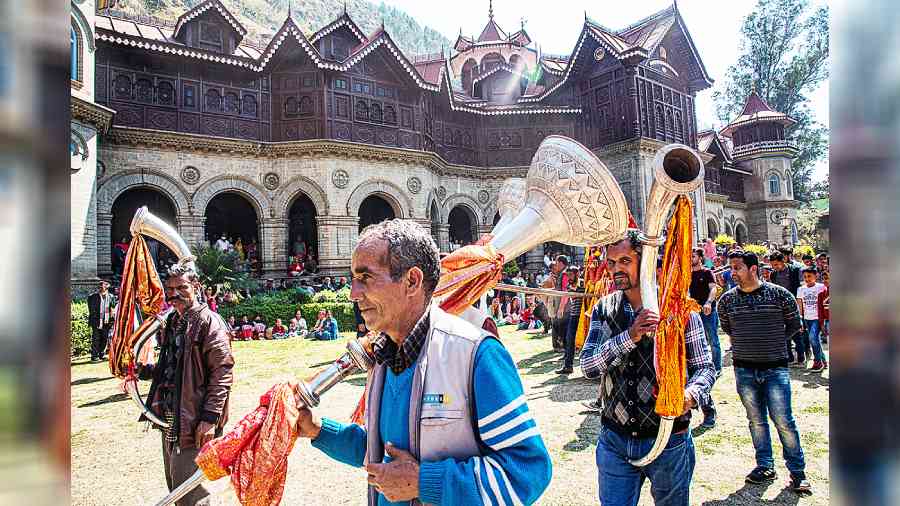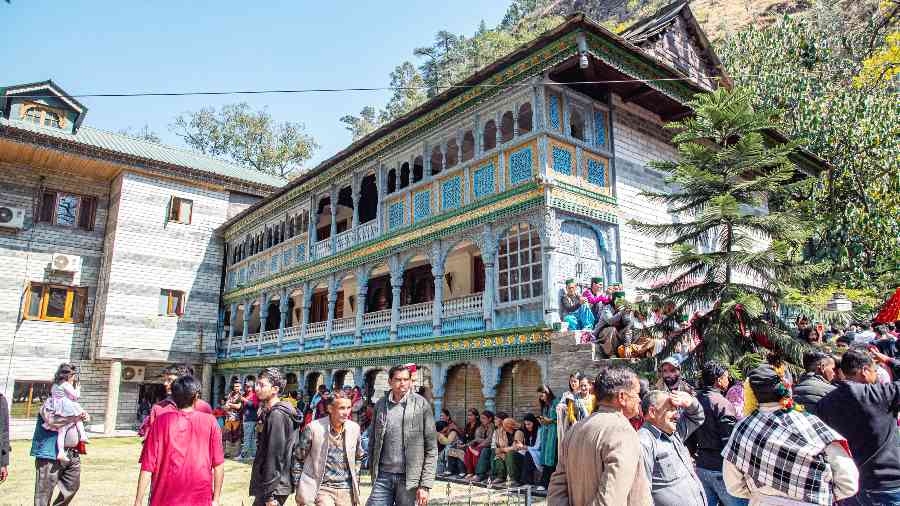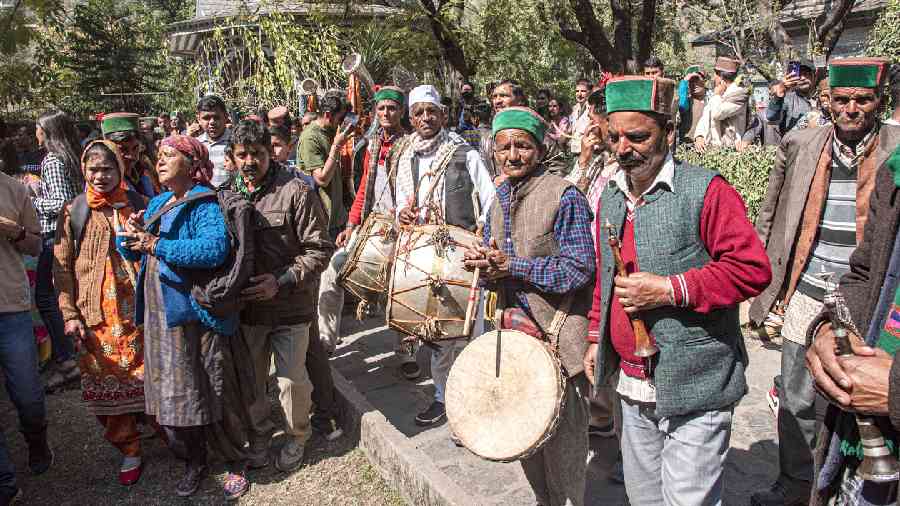So Raju, we are staying in Rampur today. What is there to see?” I had accosted our young hotel attendant Rajswaroop when he brought the morning tea.
As he started to reel off names — Raghunath mandir, Ayodhya mandir, Dumgir Buddha mandir, Narsingh mandir — I stopped him midway and firmly said that no mandir and no car travel, but, on the other hand, we would love to attend some local activity.
Raju thought for a moment and then his face lit up: “Saab, aap bade lucky ho! You can go to Phag mela, sirf do kilometre (2km) aage hain. It has started yesterday and will continue for three more days. Woh Padam Palace mein hota hai aur woh bhi barhi mashoor raja ka makaan hai!”
Rampur Bushahr was our pit stop while descending from Kibber National Park (Snow Leopards... but that is another story!). Rampur is a small and bustling town in Himachal Pradesh on the bank of River Sutlej (or Shatadru, one of the famous pancha-nad). It is at an altitude of around 4,500ft and becomes very cold during winters.
The Bushahr name and the settlement itself bear a long history. The town served as the last capital of the Bushahr dynasty, rulers of the Shimla and Kinnaur regions. According to legend, Pradyumna, son of Lord Krishna, wanted to marry the daughter of Banasur, ruler of Shonitpur (Saharan). The latter died in the ensuing fight and Pradyumna became the king of Bushahr and Kinnaur.
About a 100 years ago, the Bushahr kings changed the capital from Sarahan to Rampur. But from ancient times Rampur was an important town for two activities. Situated on the Old Hindusthan Tibet road it served as a trading centre between India and Tibet.

Padam Palace, the seat of the Rampur Bushahr kings, is an impressive building that stands against the backdrop of the mountains

A part of the buildings in the Padam Palace area is beautifully carved and stands out with its turquoise hue
In fact, as early as 300 years ago, a trade treaty was signed with the exchange of Tibetan horses and Bushahri swords.
Rampur also falls on the common pilgrimage route of Kailash Parbat and Manas Sarobar, sacred to Hindus, Buddhists and the Bon community. The commercial and religious activities allowed Tibetan Buddhism to flourish in these areas.

The foundation stone of the partcolonial-part-localstyle Padam Palace was laid by the then king Padam Singh in 1919 and it was completed in 192
The road to the mela was downhill throughout and as I neared the palace I could see more and more excited people, dressed in colourful attire, with men in the ubiquitous green and red banded Bushahari topi thronging the street. The autos, cars and buses came and unloaded the passengers. Finally, I was sucked into the mela crowd and entered the hallowed Padam Palace.
Padam Palace was built by Raja Padam Singh in 1919. It was the residence of Virbhadra Singh, the long-serving chief minister of Himachal Pradesh. The architecture of Padam Palace is a pleasing mixture of European or colonial and Indian genres.
The long majestic palace, set against the backdrop of the Himalayan range, has a number of tall columns with dark wooden screens etched with intricate carvings. The coloured glasses made bright geometric patterns in light and shade. A plaque on the main façade bore an inscription stating that Raja Padam Singh had lain the foundation in 1919.
In the other corner of the well-kept sprawling lawn was a beautiful blue wooden structure, complete with colourful wooden carvings. It was the Machhkandi, from where the king conducted the durbar and met his people. But today, all I could see were happy people, enjoying the Phag Mela, an important annual event to celebrate the Hindu new year (in Chaitra-Baishakh, or March according to the calendar). Phag is derived from Phalgun or Phagun, the month when winter recedes and summer starts to set in. It is also connected to the Phag or Holi, the festival of colours.

People carry in the idols from temples around Rampur Bushahr on their shoulders

For men, the green and red banded caps typical of the region are ubiquitous

. The idols are carried to a turquoise doorway with the skull of a blue sheep at the top. It is here that they are received by the king
The mela is also steeped in tradition. In olden days of Bushahr dynasty, shepherds came from near and far with their animal herds to attend the fair hosted by the King. Fourteen idols from Shimla, Kullu, Manali, Kinnaur and Lahaul and Spiti are carried on decorated palanquins with much pomp and grandeur and are accompanied by many musical bands. The king receives the deities in front of a doorway adorned on top by the skull of a blue sheep, and plays Holi with the gods.
I tagged along with a procession that had a placard with the legend “Ma Durga Devi Saahiba” and also name of the place from where she had come. The deities had only shiny metallic faces, adorned with traditional ornaments and rich brocade. It consisted of the principal face of a lady and four smaller faces, making it somewhat similar to our very own Ma Durga and her family! As I moved around in unison with the boisterous crowd and saw the happy faces of Raju and his comrades, I could feel the excitement and revelry welling up within me.
The author is a professor at Indian Statistical Institute, Calcutta
